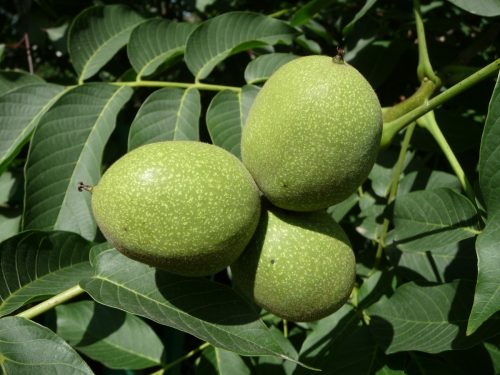Walnut, supplier of the shore
Also known as:
English walnut
Common walnut
Madeira walnut
You are viewing the mobile-adapted version of the page.
The one for tablets, laptop and desktop also provides general information, such as origin, toxicity and cultivation.
Walnut (Jug
Do not force dry walnuts (oven, on the stove). Drying too quickly can affect the flavor. Some species are more sensitive to this than others. For example, Jug
Bugs
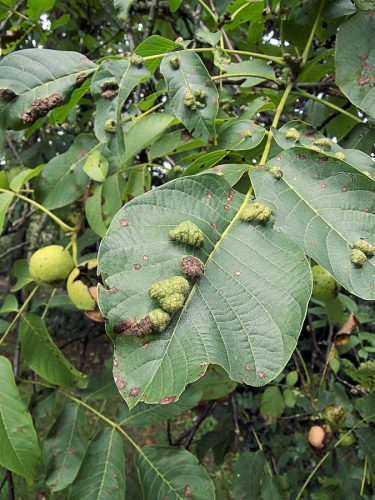
Galls (bumps) on the leaf; on the underside cavities with brown hairs. Between the hairs live felt mites: Walnut blister mite (Aceria erinea).
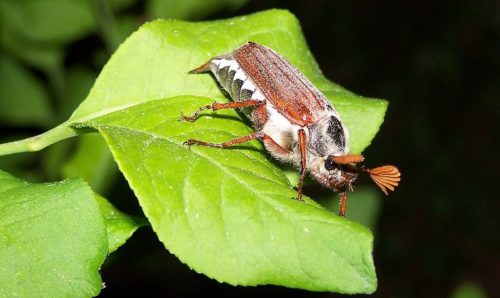
Leaf is eaten by 3 cm brown beetles: Common Cockchafer (Melolontha melolontha). A swarm of cockchafers can eat a walnut completely bare.
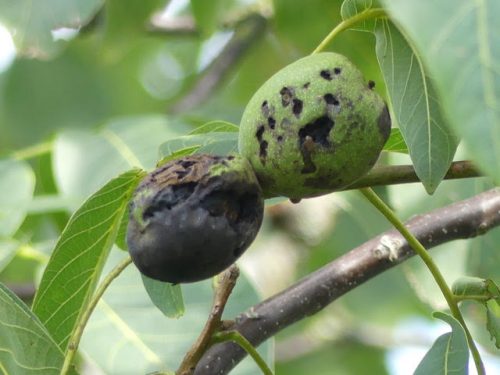
Bore holes can be seen in the ripening husks; the nuts in the husks show black spots. Usually the walnuts are also affected: they are covered with black, slimy spots. Damage by the Walnut Husk Fly (Rhagoletis completa).
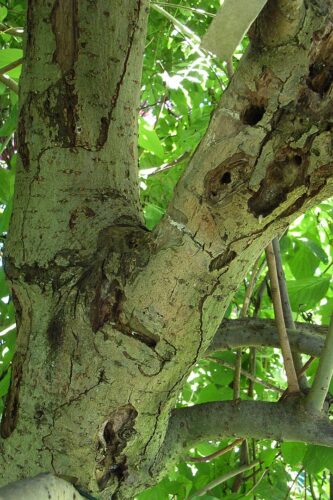
Large, oval holes in the trunk. Damp floury powder in the area. Special detail: the borehole smells like vinegar because the caterpillar produces acetic acid to digest the wood: caterpillar of goat moth (Cossus cossus).
Fungi & diseases
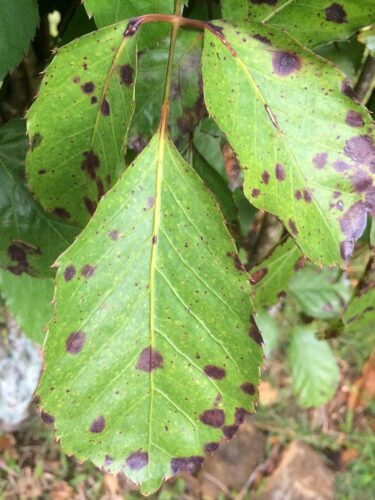
Leaf shows black spots, falls early. Occurs especially during wet, cool summers: walnut blight (Xanthomonas campestris juglandis).
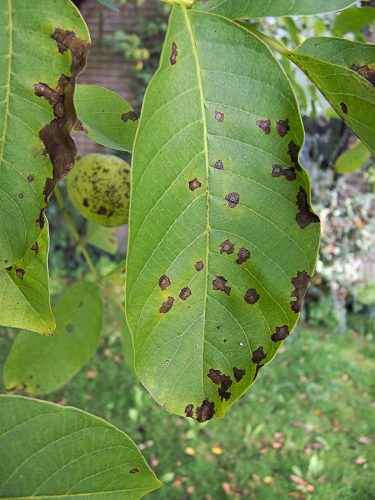
Yellow, angular spots on leaves, discoloring to dark brown. Then a dark brown rim develops around the spots. The walnuts dry up and fall off prematurely. These can still be eaten, but do not taste as good: walnut anthracnose Ophiognomonia leptostyla.
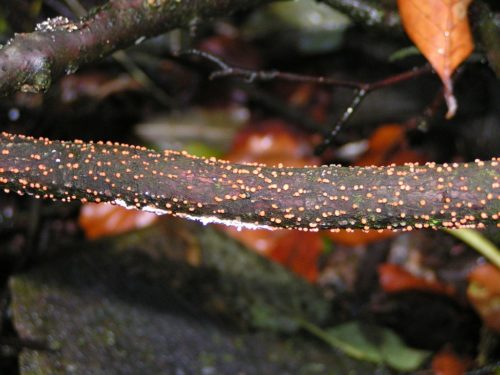
Small, orange-red mushrooms appear on affected branches, which can be either dead or living branches: Coral spot (Nectria cinnabarina).
Growth remains stunted, at the base of the tree a delicate membrane of fungal threads forms behind the bark. Brown mushrooms follow in the fall: honey fungus (Armillaria mellea). Infestation by the honey
Other
Birds and squirrels eat walnuts. Magpies and chews grab a nut and drop it from a great height onto a hard surface to get the nut open.
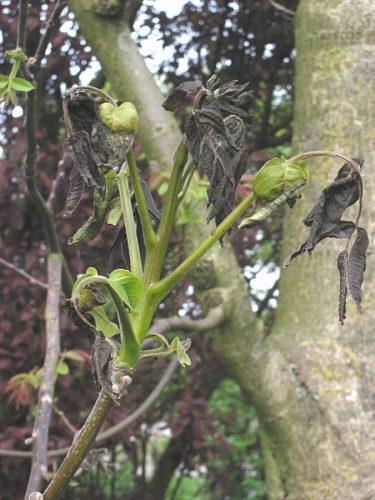
Late night frosts (May, early June) can damage the foliage.
Vertical cracks in the bark of the trunk: Bark cracks.
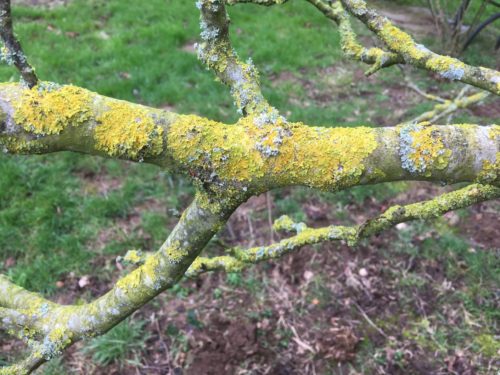
Lichen on the branches.
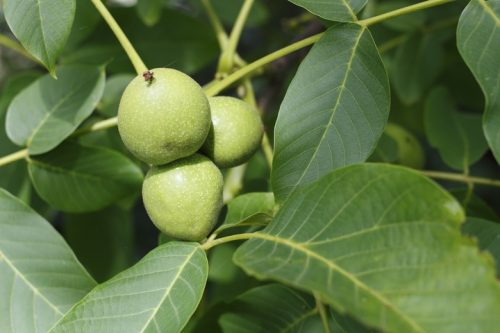
After a period of drought, the nut tree loses many young nuts at the end of May and the beginning of June: nut drop due to drought. During periods of drought, water heavily once a week – between 50 and 100 liters depending on the size of the tree.
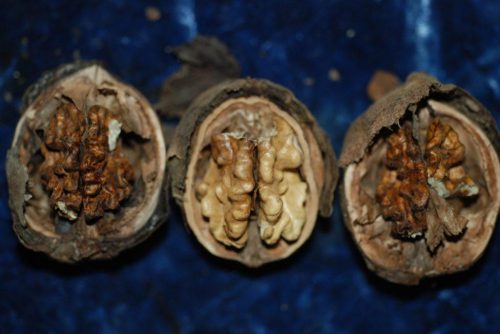
Walnuts, stripped of their husks, appear to be covered with black fungus: Alternaria, Fusarium wilt, or Aspergillus niger. The nuts may also be covered with a drab layer of fungal down. Some of these fungi can produce toxins (mycotoxins).

